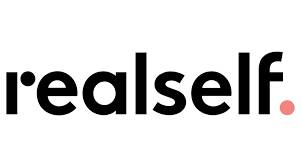CO2 Laser Resurfacing
Illuminating Beauty
CO2 Laser Resurfacing Revolutionizes Skin Health
The road to flawless, rejuvenated skin is no longer a secret. With the advent of sophisticated dermatological technology, the dream of reversing signs of aging, and improving skin texture and tone, is now within reach. Standing tall among these technological advancements is CO2 laser resurfacing, a procedure making waves in the realm of aesthetic medicine.
CO2 laser resurfacing leverages the power of light and heat to create micro-injuries on the skin’s surface, triggering the body’s healing process. This results in the production of new collagen and elastin – the proteins responsible for skin’s elasticity and strength, eventually leading to smoother, firmer, and younger-looking skin.
The treatment is potent against a variety of skin concerns. It’s a formidable player in the fight against wrinkles, fine lines, and sun damage. It also combats acne scars, age spots, and uneven skin texture or pigmentation. And let’s not forget its efficacy in tightening skin and shrinking pores, truly a panacea for multiple skin woes.
Fractional CO2 laser resurfacing is a newer iteration of the procedure, breaking the laser energy into thousands of tiny beams to treat a fraction of the skin in the target area at a time. This technique, often referred to as “fractional photothermolysis,” provides similar results to traditional CO2 resurfacing, but with fewer side effects and a shorter recovery period.
Like any medical procedure, CO2 laser resurfacing isn’t without its risks. Temporary side effects can include redness, swelling, and a sensation similar to sunburn. More serious complications, although rare, include infection, scarring, or changes in skin color.
Treatment preparation often involves a series of skincare steps starting weeks in advance to prepare the skin and reduce potential risks. Post-treatment care is equally vital, requiring diligent sun protection and a specific skincare routine to promote healing and maximize results.
CO2 laser resurfacing may not be suitable for everyone. Those with darker skin, certain skin conditions, or taking specific medications may face higher risks. It’s crucial to discuss your medical history and skincare goals with a knowledgeable provider to determine if this treatment is the right fit for you.
While cost may be a consideration — with treatments typically ranging in the thousands, it’s important to remember that the investment is in expertise as well as technology. A trained, experienced provider can skillfully tailor the treatment to your unique skin needs, delivering safe, effective results.
In the quest for radiant, youthful skin, CO2 laser resurfacing presents a promising solution. With its ability to address multiple skin concerns in a single procedure, it’s more than a trend – it’s a testament to how far aesthetic medicine has come.
The journey to a more confident you starts with one decision. That is the decision to get treated, why wait Book Online today? If you’re on the fence or have questions brewing, remember: We at SullivanDermatology are always here to help.Videos
CO2 Laser Resurfacing
Advanced Technologies for Rejuvenation
CO2 laser resurfacing is a revolutionary treatment for individuals battling signs of aging, sun damage, acne scars, or uneven skin texture. This technique uses a CO2 fractional laser, a technology that promises impressive results with lesser downtime compared to traditional resurfacing methods.
With a CO2 fractional laser, patients experience precise treatment that targets only a fraction of the skin, leaving the surrounding areas untouched. This accelerates the CO2 laser recovery process while still delivering powerful skin rejuvenation.
CO2 laser resurfacing works by using a CO2 fractional laser to deliver light energy in tiny microbeams into the skin’s deeper layers. These microbeams trigger the body’s natural healing process, promoting the production of new collagen and healthy skin cells.
The CO2 fractional laser’s ability to target specific skin issues without damaging surrounding tissue is its most distinguishing feature. This not only results in more effective treatment but also significantly reduces the CO2 laser recovery time.
The procedure may cause some discomfort, so a topical anesthetic is usually applied to the treatment area for your comfort. Afterwards, your skin may feel like it has a mild sunburn, but this is a normal part of the CO2 laser recovery process.
The results of CO2 laser resurfacing can be quite impressive. Many patients report improved skin texture, reduced appearance of fine lines, wrinkles, and scars, and a more youthful complexion. However, results can vary based on factors such as the extent of skin damage, age, and overall health condition.
The CO2 laser recovery process is typically smoother and quicker due to the fractional approach. Most patients can expect to see initial results within a week, with continued improvement over the following months as new collagen forms.
As with any skin treatment, it’s essential to follow the post-treatment care instructions to support the CO2 laser recovery process and ensure optimal results. This includes avoiding sun exposure, keeping the skin clean and moisturized, and refraining from picking or scratching at the treated skin.
The cost of CO2 laser resurfacing can vary depending on factors like the size and condition of the treatment area, the number of sessions required, and your geographical location. Always consult with a qualified healthcare professional to get an accurate cost estimate and to determine if CO2 laser resurfacing is right for you.
In conclusion, CO2 laser resurfacing with a CO2 fractional laser offers a promising solution for various skin concerns. With quicker recovery times and potent skin rejuvenation capabilities, it’s an increasingly popular choice for those seeking to enhance their complexion and fight signs of aging.
FAQs About CO2 Laser Resurfacing
CO2 laser resurfacing works by using a laser to create micro-injuries on the skin's surface. This triggers the body's healing process and stimulates the production of collagen and elastin, resulting in smoother, younger-looking skin.
CO2 laser resurfacing can treat a variety of skin conditions, including wrinkles, fine lines, sun damage, acne scars, age spots, and uneven skin texture or pigmentation. It can also help tighten skin and shrink pores.
Fractional CO2 laser resurfacing is a technique that breaks the laser energy into thousands of tiny beams to treat only a fraction of the skin in the target area at a time. This technique provides similar results to traditional CO2 resurfacing but with fewer side effects and a shorter recovery period.
Intralesional treatments are usually administered every four to six weeks. However, the exact frequency will depend on your specific condition and doctor's recommendation.
Your provider will guide you through a specific skincare routine in the weeks leading up to your treatment. This might include using a retinoid cream, avoiding sun exposure, and discontinuing certain medications.
After treatment, you will need to follow a specific skincare routine and avoid sun exposure to promote healing and maximize results. You may also experience some redness and swelling, which should subside within a few days.
No, CO2 laser resurfacing is not suitable for everyone. Those with darker skin, certain skin conditions, or on specific medications may face higher risks. Always discuss your medical history and skincare goals with your provider to determine if this treatment is right for you.
The cost of CO2 laser resurfacing can vary, but treatments typically range in the thousands. The final cost depends on the size of the treatment area, your geographic location, and your provider's level of expertise.
The number of treatments needed can vary depending on your specific skin concerns, but many people see results after one treatment. Your provider will develop a treatment plan tailored to your needs.
The results of CO2 laser resurfacing can be long-lasting, but they are not permanent. Sun protection and a good skincare routine can help maintain the results.



